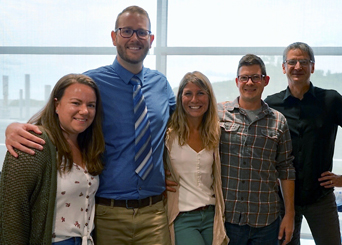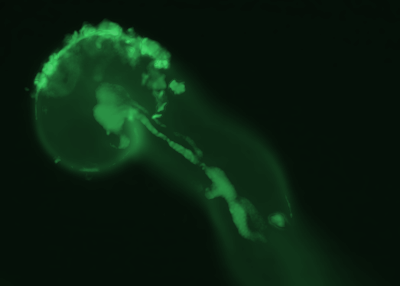
Gage Lab
Dept. of Molecular and Cell Biology
University of Connecticut - Storrs

Overview
Our lab is curently researching:
1. Signaling in Sinorhizobium, symbiotic soil bacteria that can nodulate and provide nitrogen to plants. Link
2. How the protist microbiome on roots interacts the prokaryotic microbiome to affect plant health. Link
3. Biology of termites, their symbiotic protists and the bacterial symbionts of those protists. Link
4. Bacterial biosensors for monitoring complex environments, such as soil, at small spatial scales. Link
Our approaches to these problems make use of genetics, molecular biology, microfluidics, next generation sequencing and microscopy/image analysis.

Lab News
3/7/23
After a long haul, work done by Jamie and Chris Hawxhusrt on protist transport of bacteria along plant roots is now published. ApplEnvMicro Link
1/10/22
Work by Jamie, Gabrielle and colleagues from the Conn Ag Station describing the protist microbiome of corn and which of those can be cultured has been published in Env. Micro. Reports. Link
6/18/21
Work by Chis Hawxhurst, Jamie and Charles on how soil protists can transport bacteria along plant roots has been published in Biorxiv. Link
2/30/21
Another two Dysgonomonas genomes have been published by Charles. Link
2/4/21
A paper describing light-activated EPS synthesis has been published in ACS synthetic biology. Azady Pirhanov from Yongku Cho’s lab is the first author with Gage lab contributions from Charles Bridges and Reed Goodwin. Link
2/3/21
Charles’ announcement of two Dysgonomonas genomes has been published Link
12/17/20
Charles’ paper on media for aerobic (and anaerobic) growth of Dysgonomonas has been published. It is a fantastic distillation of a bunch of work that shows what is needed to growth this important member of the Bacterioides group under aerobic conditions in order to make genetics and physiology easier. Link
12/15/20
New paper at BioRxiv:
Simultaneous Single-Cell Genome and Transcriptome Sequencing of Termite Hindgut Protists Reveals Metabolic and Evolutionary Traits of Their Endosymbionts Link
11/12/20
Two new papers have come out. 1. One on the community structure of bacteria associated with protists and the other on 2. using PNA clamps to better assess protist communities in the rhizosphere of field grown corn.
1. Oligotyping bacterial symbionts of hindgut protists reveals complex population structures and transmission trends in the termite Reticulitermes flavipes. PLoS ONE 15(5): e0233065.
https://doi.org/10.1371/journal.pone.0233065
2. Validation of a PNA clamping method for reducing host DNA amplification and increasing eukaryotic diversity in rhizosphere microbiome studies. Phytobiomes 4:291-302.
https://doi.org/10.1094/PBIOMES-05-20-0040-TA
-------------------------------
10/5/20
Michael Stephens is now working for Genewiz on their NextGenSequencing process development team.
-------------------------------
3/1/19
We have received USDA funding to work on characterizing and understanding the functions of the protist community associated with maize rhizosphere. This is briefly described on the Rhizosphere_Microbiology page.
---------------------
8/23/19
Michael successfully defended his PhD. Congratulations!!
-------------------------------

